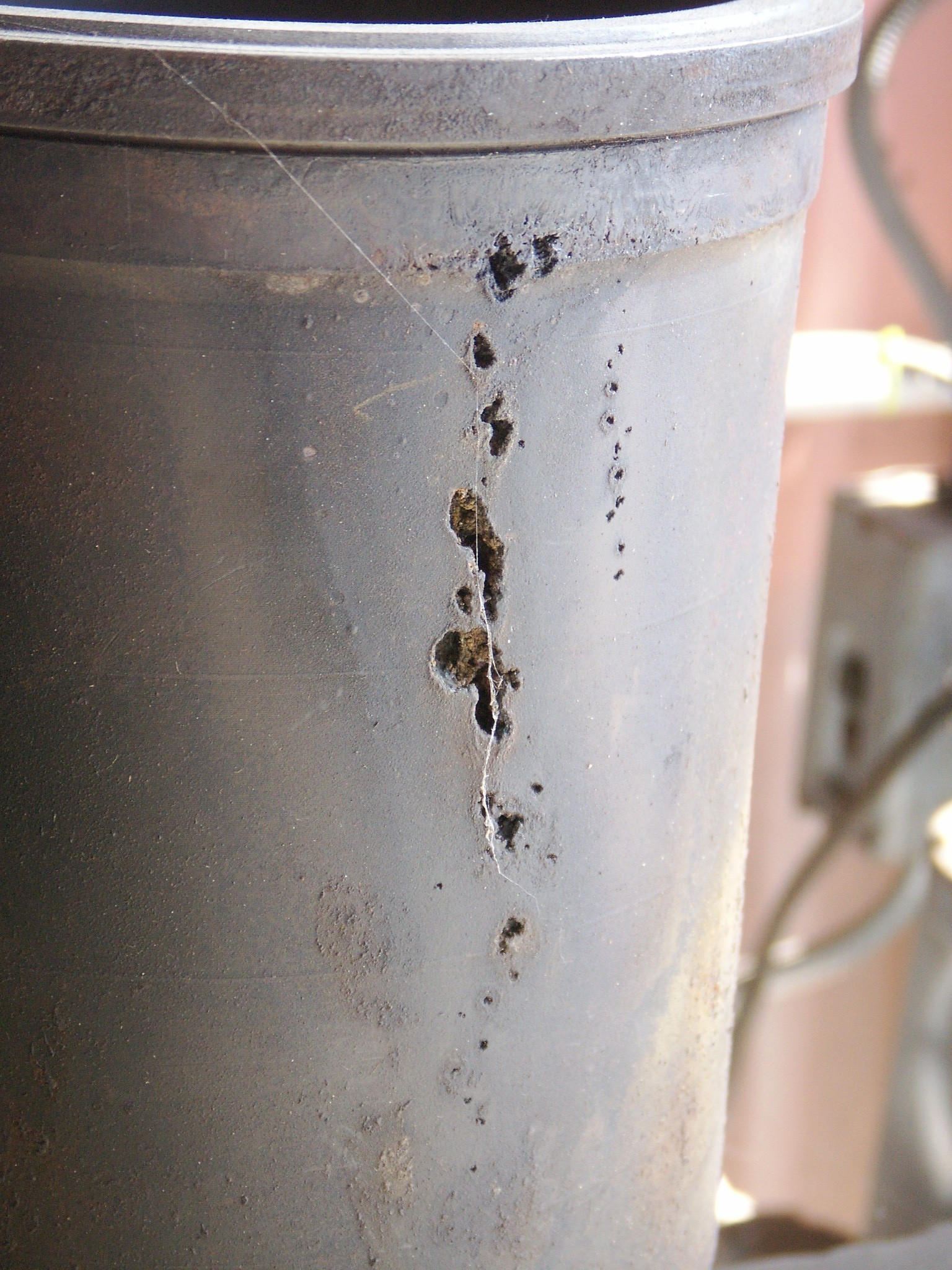Cavitation In Cooling Sytems
One of the most common and costly results of improper cooling system maintenance is the perforation of wet-sleeve cylinder liners. The perforation is caused by repetitive pitting of the liner resulting from liner vibration. As the fuel inside ignites, the liner vibrates within the block. The outside wall of the liner actually moves away from the coolant causing a near vacuum for an instant. This low-pressure causes
 the surrounding coolant to boil, forming tiny bubbles. The liner then returns to its position with extremely high velocity, pressing against the bubbles with a violent force. The bubbles implode (collapse) against the liner wall surface at pressures up to 60,000 PSI! The collapse of these bubbles blasts small holes in the steel liner. This pitting process will repeat, digging tiny tunnels through the liner. Eventually, the liner wall will be perforated all the way through, allowing coolant to enter the combustion side of the cylinder.
the surrounding coolant to boil, forming tiny bubbles. The liner then returns to its position with extremely high velocity, pressing against the bubbles with a violent force. The bubbles implode (collapse) against the liner wall surface at pressures up to 60,000 PSI! The collapse of these bubbles blasts small holes in the steel liner. This pitting process will repeat, digging tiny tunnels through the liner. Eventually, the liner wall will be perforated all the way through, allowing coolant to enter the combustion side of the cylinder.
“Fully formulated” coolant contains nitrite and/or molybdate. The nitrite or molybdate will form a thin protective oxide film on the coolant side of the liner wall. This oxide film, which is formed by reaction of the nitrite or molybdate with the liner wall, acts as a protective barrier to prevent corrosion and cavitation (pitting) from occurring.
In a properly protected system that contains Pencool®, the imploding bubbles attack the protective film. The film quickly heals over the liner by drawing nitrite or molybdate from the coolant. In an improperly protected system, the bare metal surface area is immediately exposed to cavitation forming a corroded pit in the metal.
If coolant enters the combustion side of the cylinder, an expensive in-frame overhaul is required. Liquid coolant doesn’t compress; when a piston fires with coolant in the combustion chamber, it can be blocked by the coolant, preventing it from making an entire stroke. This usually results in a bent rod and can cause a cracked block. Also, coolant can leak down into the engine oil. This results in overheating of lubricated moving parts and can destroy an engine.
Engine Conditions that Affect Liner Pitting
An increase in air bubbles in a cooling system can increase the potential for cavitation erosion (pitting) of metal surfaces. Increased air can enter the cooling system through cooling system leaks and/or a faulty radiator cap. This reduces cooling system pressure and increases the potential for bubble formation in your coolant.
The potential for liner pitting increases in cold weather. When an engine is cold, engine vibration increases because of increased piston-to-cylinder clearance and because the engine has a tendency to lug in cold weather.
Engines where loads fluctuate rapidly, such as school and transit buses, fire trucks or garbage trucks, experience more vibration. These types of engines experience a high incidence of liner pitting.
Cooling System Maintenance
The corrosion inhibitor you select will have a major impact on your fleet maintenance costs and the profitability of your operation. Pencool will give you the competitive edge you need to keep your maintenance costs down and keep your vehicle generating profits rather than repair bills.
